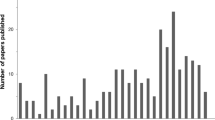Abstract
Wetlands are a vital link between land and water in Bangladesh. A majority of the people of Bangladesh are critically dependent on wetlands. In this paper, the values of wetlands, causes and effects of wetlands degradation, as well as the present wetlands management approach, are analyzed and recommendations for wetlands management are suggested based on participatory rural appraisal (PRA), field visit, personal experience, and existing literature and information. Wetlands play a crucial role in maintaining the ecological balance of ecosystems, but wetlands habitat of Bangladesh is under constant threat due to increase of population, intensive agriculture, overfishing, siltation, pollution, ill-planned infrastructures, lack of institutional coordination, lack of awareness, etc. As a result biodiversity is reducing, many species of flora and fauna are threatened, wetlands-based ecosystem is degenerating, and the living conditions of local people are deteriorating as livelihoods, socioeconomic institutions, and cultural values are affected. Wetlands management is not addressed separately in water management activities of Bangladesh. In order to balance human needs and wetlands conservation, a mainly community-based wetlands management approach has been taken in Bangladesh, but this is not enough to prevent the degradation of wetlands. Therefore, Bangladesh now needs a comprehensive strategy combining political, economic, social, and technological approaches to stop further degradation of wetlands. Therefore, wetlands management should be incorporated into a system of integrated land and water use and, indeed, into the socioeconomic system of the country. Policies, strategies, and management plans for sustainable use and conservation of wetlands of Bangladesh must be based on solid knowledge and understanding of their ecological and socioeconomic functions and processes.






Similar content being viewed by others
References
Akonda AW (1989) Bangladesh. In: Scott DA (ed) A directory of Asian wetlands. IUCN, Switzerland
Alam SM, Chowdhury HM (2003) Wetland. Banglapedia: National Encyclopedia of Bangladesh, Banglapedia Trust, Asiatic Society of Bangladesh
Ali MY (1990) Open water fisheries and environmental changes. In: Rahman AA, Huq S, Conway GR (eds) Environmental aspects of surface water systems of Bangladesh. University Press Ltd, Dhaka
Bennett S, Scott D, Karim A, Sobhan I, Khan A, Rashid SMA (1995) Wetland resources specialist study, northeast regional water management plan. Bangladesh Flood Action Plan (FAP)-6, Bangladesh
BWDB (2007) Perennial and main wetlands of Bangladesh. Ministry of Water Resources, Bangladesh
Chowdhury S (1998) Saving our oceans: some thoughts on fisheries conservation. The Daily Star, vol 2, No. 100, Dhaka
Coleman JM (1969) Brahmaputra river: channel processes and sedimentation. Sedimentary Geology B129-239
CPD (2001) Policy brief on environmental policy. Task Force Report, Centre for Policy Dialogue, Dhaka
FAO (1988) Agro-ecological regions of Bangladesh. FAO, Rome
GOB (1999) NWP (National Water Policy). Ministry of Water Resources, Bangladesh
GOB (2001) Coastal and wetland biodiversity management at cox’s bazar and hakaluki haor project documents. Ministry of Environment and Forests, Government of Bangladesh
Gopal B (1995) Limnology in developing countries. vol 1. SIL-International Association for Limnology, New Delhi
Hughes R, Adnan S, Clayton BD (1994) Floodplains or flood plans? A review of approaches to water management in Bangladesh. Research Advisory Service, Dhaka
IUCN (2007) Community based haor and floodplain resource management project document. Ministry of Environment and Forests, Bangladesh
Khan AA (1993) Freshwater wetlands in Bangladesh: opportunities and options. In: Nishat A, Hussain Z, Roy MK, Karim A (eds) Freshwater wetlands in Bangladesh—issues and approaches for management. IUCN, Dhaka
Khan SM, Haq E, Huq S, Rahman AA, Rashid SMA, Ahmed H (1994) Wetlands of Bangladesh. Bangladesh Centre for Advanced Studies (BCAS) Dhaka
Kim GK, Park YM, Choi SH (2006) Developing a wetland-type classification system in the Republic of Korea. Landscape Ecol Eng 2:93–110. doi:10.1007/s11355-006-0012-x
Millennium Ecosystem Assessment (2005) Ecosystem and human well-being: wetlands and water synthesis. World Resources Institute, Washington
Mirza QMM, Warrick AR, Ericksen JN, Kenny JG (2001) Are floods getting worse in the ganges, brahmaputra and meghna basins? Environmental Hazards 3:37–48
Mitsch WI, Gosselink IG (1986) Wetlands. Van Nostrand Reinhold, New York
Nishat A (2003) Management of fresh water wetlands in Bangladesh: issues and strategy at “http://www.doe-bd.org/cwbmp/inception_report/grp3_nishat_wetl_use.ppt” visited on 26 October 2007
Author information
Authors and Affiliations
Corresponding author
Rights and permissions
About this article
Cite this article
Byomkesh, T., Nakagoshi, N. & Md. Shahedur, R. State and management of wetlands in Bangladesh. Landscape Ecol Eng 5, 81–90 (2009). https://doi.org/10.1007/s11355-008-0052-5
Received:
Revised:
Accepted:
Published:
Issue Date:
DOI: https://doi.org/10.1007/s11355-008-0052-5




